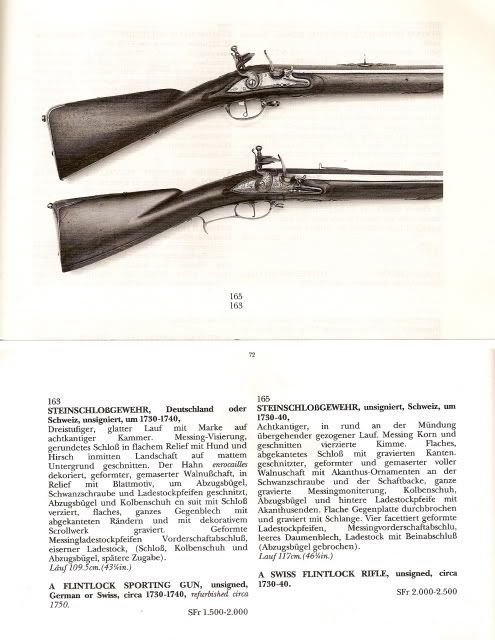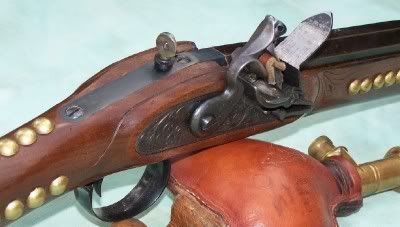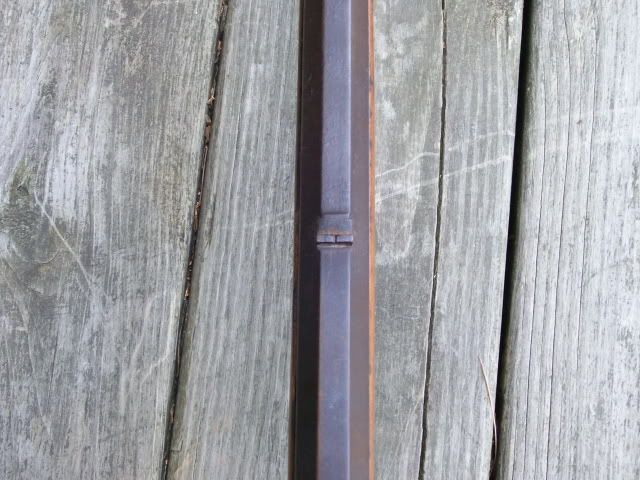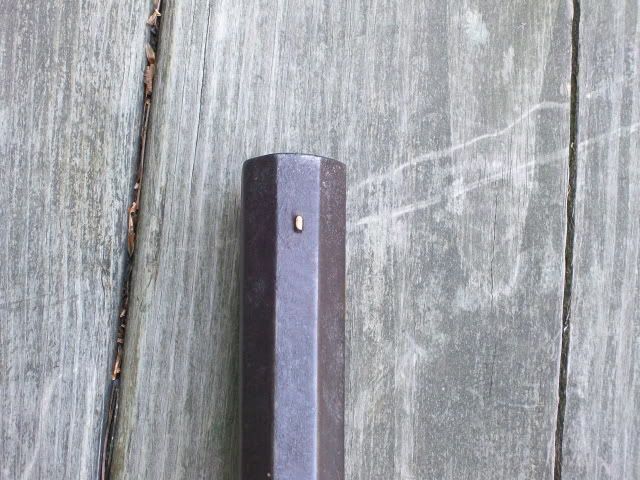Stophel
75 Cal.
- Joined
- Jul 8, 2005
- Messages
- 5,963
- Reaction score
- 869
By the way, here's the one and only POSSIBLE peep sight I have seen on an 18th century rifle. The top gun. A Swiss rifle, say 1740. The rear sight blade is quite tall, and I'm making a BIG assumption that it could be a peep. I also cannot verify that the sight is original to the gun. If so, it seems to be unique. I'm beginning to think that is is some form of buckhorn. The Germans use the word "Kimme" for a notch rear sight (which is what it is called in the description), and I'm not sure they use that term for a peep....

Oh, and note also the length of the barrel...46 1/4". From what VERY LITTLE I have been able to ascertain, this might be common on Swiss rifles.
Again. you will see bona fide peeps on Turkish/Arab guns which are in the form of a large, thick, triangular plate mounted on top of the breech of the barrel and have a series of holes drilled for different ranges. They are not exactly sleek nor compact. You might perhaps find an occasional European gun done this way in imitation of the Turks, or they might possibly have reused a Turkish barrel with a sight like this (they were also damascus barrels, and using a barrel captured from their great enemy was quite stylish). I can see if I can come up with a photo of this type of sight for you. I just don't have one on line at the moment.

Oh, and note also the length of the barrel...46 1/4". From what VERY LITTLE I have been able to ascertain, this might be common on Swiss rifles.
Again. you will see bona fide peeps on Turkish/Arab guns which are in the form of a large, thick, triangular plate mounted on top of the breech of the barrel and have a series of holes drilled for different ranges. They are not exactly sleek nor compact. You might perhaps find an occasional European gun done this way in imitation of the Turks, or they might possibly have reused a Turkish barrel with a sight like this (they were also damascus barrels, and using a barrel captured from their great enemy was quite stylish). I can see if I can come up with a photo of this type of sight for you. I just don't have one on line at the moment.








